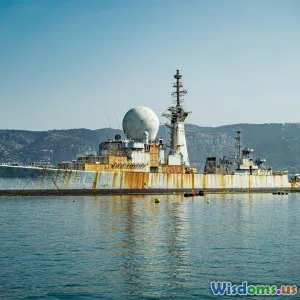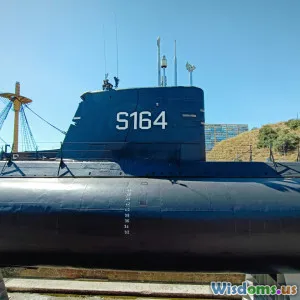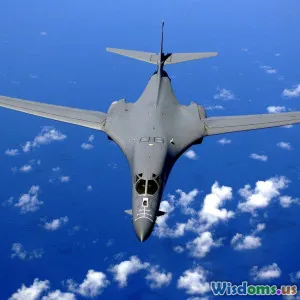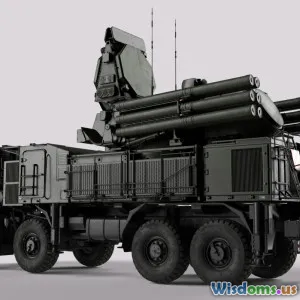
Which Anti Drone Ship Defenses Work Best at Sea
17 min read Comparing leading anti-drone defenses for ships and their effectiveness at sea. (0 Reviews)
Which Anti-Drone Ship Defenses Work Best at Sea
Modern naval warfare is rapidly evolving as the threat from unmanned aerial vehicles (UAVs), commonly known as drones, becomes increasingly sophisticated. From large naval fleets to small patrol boats, drones pose challenges that call for innovative and reliable defensive measures. But with numerous anti-drone technologies available, which ship defenses prove most effective in real-world maritime scenarios? This article dives deep into the leading systems protecting ships at sea, comparing their strengths, limitations, and best-use cases.
The Rising Drone Threat in Maritime Environments

Not so long ago, defending ships meant guarding against missiles, enemy aircraft, or submarines. Today, agile and affordable drones threaten shipping lanes, naval vessels, and harbor infrastructure. Their ability to perform surveillance, drop explosives, or act as kamikaze weapons is forcing navies to rethink their defensive architecture.
Real-World Cases
- 2019 Strait of Hormuz Incidents: Merchant ships and military vessels came under repeated drone surveillance or attack, showing how hard it is to defend large sea areas from small, hard-to-detect threats.
- Ukrainian Conflict (2022-2024): Russian warships have suffered multiple drone attacks in the Black Sea. Notably, in October 2022, the Russian frigate Admiral Makarov reportedly engaged several suicide maritime drones using its onboard guns and electronic warfare systems.
- Red Sea Pirate and Militant Attacks: Commercial vessels transiting through high-risk regions have faced drone harassment, sparking urgent demand for deployable anti-drone systems.
Naval analysts now rank drone swarms among the top asymmetric threats even for well-equipped fleets. This rapidly changing landscape compels navies to combine several lines of defense, each tailored to marine realities.
Core Technologies for Ship-Based Anti-Drone Defense

Intercepting drones at sea is vastly different from land operations. Shipboard systems need to function reliably in salt-laden, moisture-rich environments with constant motion, and minimal risk of collateral damage. Let’s compare the most significant anti-drone technologies currently deployed or under development for ships:
1. Electronic Warfare (EW) Systems
- What They Do: EW systems jam or disrupt the command-and-control (C2) links between the drone and its operator, or interfere with navigation systems like GPS/GLONASS.
- Example: The U.S. Navy’s Sierra Nevada MODi and the British Babcock DroneBlocker emit targeted radiofrequency interference, causing drones to lose guidance or return to base.
- Strengths: Rapid response, non-kinetic (no physical damage or risk of missed shots), reusable.
- Challenges: Less effective against autonomous drones or those with pre-programmed routes. Jam-resistant drones are emerging, and accidently jamming friendly systems is also a real risk.
2. Hard-Kill Systems (Guns, Cannons, Missiles)
- What They Do: Physically destroy what they target. Examples include rapid-fire autocannons, remote weapon stations, or even specialized surface-to-air missiles.
- Example: The U.S. Navy’s Phalanx CIWS autocannon—originally an anti-missile system—has proven effective at shooting down slower, low-flying drones.
- Strengths: Can destroy a drone instantly; provides visual confirmation of kill. Effective against both small and larger UAVs within range.
- Challenges: Limited magazine capacity; overkill against tiny drones; risk to civilians and friendly assets if used near busy ports.
3. Directed Energy Weapons (Lasers, High Power Microwaves)
- What They Do: Direct intense energy beams at a drone, damaging sensors, electronics, or airframes. Modern laser systems are ideal for stealthy, repeatable interception.
- Example: The Helios laser system was recently tested aboard U.S. Navy destroyers, demonstrating precise takedowns of drones within a few kilometers.
- Strengths: Speed-of-light response; extremely low per-engagement cost; effectively unlimited shots as long as power is available.
- Challenges: Affected by weather and atmospheric conditions (fog, rain reduce effectiveness); range currently limited to a few kilometers.
4. Net Launchers and Counter-Drone Drones
- What They Do: Launch nets to physically trap drones (like the SKYNET solution) or deploy interceptor UAVs that ram or disable hostile drones mid-air.
- Example: France and the Netherlands have tested ship-mounted net cannons, although these are mainly reserved for port or harbor defense.
- Strengths: Can capture drones without destruction (for intelligence or forensic purposes); minimal risk to nearby vessels.
- Challenges: Limited range; requires precise aiming; impractical for swarm or high-speed threats.
Electronic Warfare: First Line of Non-Kinetic Defense
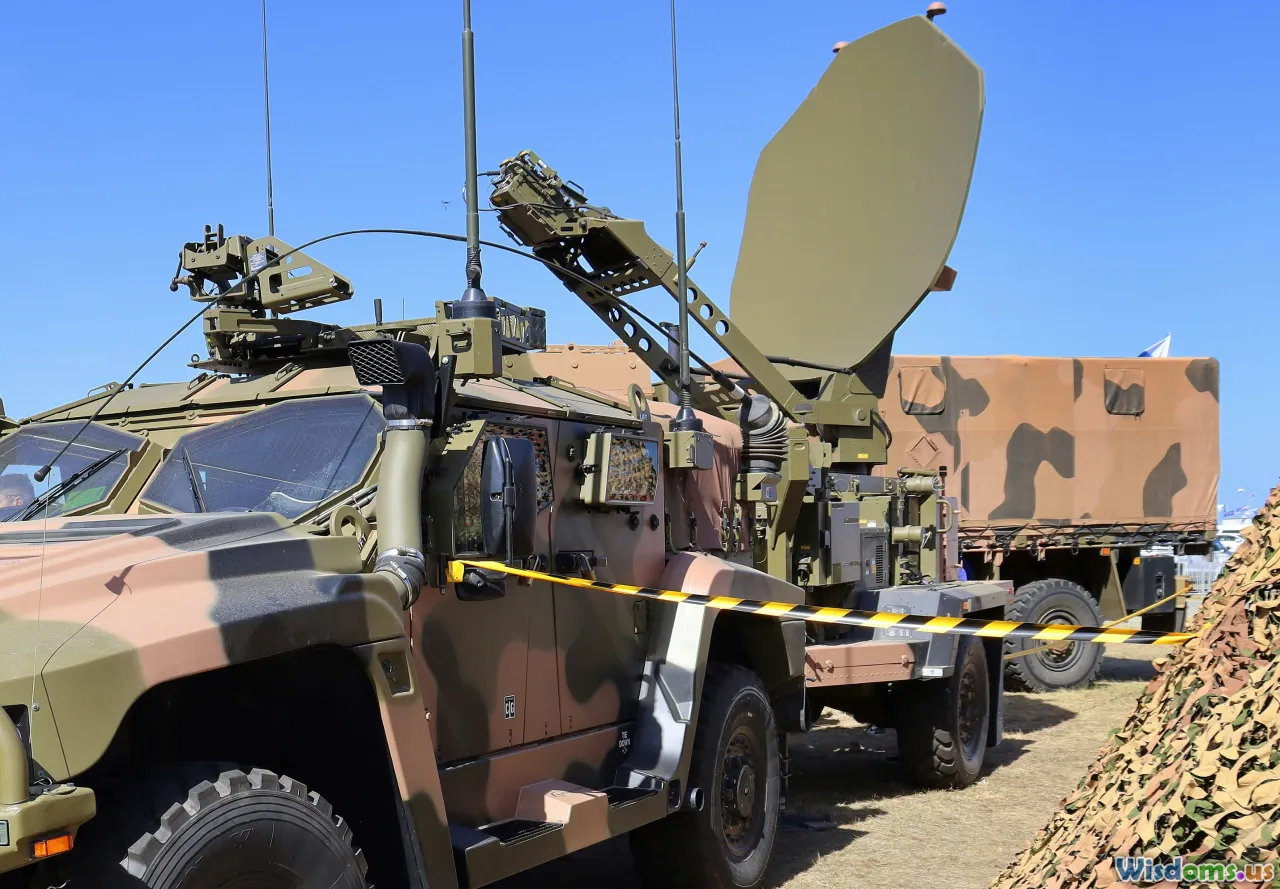
When a suspicious UAV approaches, elite navies often activate electronic warfare suites before reaching for any kinetic weapon.
Modern EW Systems in Action
- USS Boxer, 2019: Successfully downed an Iranian drone in the Persian Gulf by jamming its C2 link (likely using the U.S. Navy's anti-drone "soft kill" modules), which caused the drone to crash into the sea.
- Royal Navy Exercises, 2023: Shipboard EW testers tricked multiple surveillance drones to stray off course or land harmlessly on deck.
Core Capabilities
- Detect and Classify: Modern radars and electronic support measures (ESM) quickly spot and identify UAVs, even those using low signature or commercial frequencies.
- Rapid Response: Frequency jamming or spoofing is virtually instantaneous, making it ideal against swarm or saturation attacks.
Limiting Factors
However, as drones increase autonomy and utilize encrypted or frequency-hopping communications, the shelf life of traditional EW measures is shrinking. Incidents with Russian and Iranian drones in conflict zones show that some systems are increasingly resistant to basic jamming or spoofing.
Operational Insights
- Integration is Key: EW works best as part of a layered approach, immediately engaging drones as they cross certain detection thresholds, buying critical time for kinetic measures if the drone resists jamming efforts.
The Role of Hard-Kill Defenses: Guns and Missiles

Certainly, many ship commanders prefer a visible, tangible response—a burst of 20mm rounds from a CIWS or a direct missile intercept. These hard-kill systems, though originally designed for anti-air or missile defense, are central to anti-drone readiness at sea.
Example Systems
- Phalanx CIWS (Close-In Weapon System): The legendary, radar-guided, six-barrel Gatling gun capable of 4,500 rounds per minute. Now equipped with upgraded radar and electro-optics specialized for slow, small UAV targets.
- SeaRAM & C-Dome: These combine the benefits of guided missile technology with versatile engagement envelopes. For instance, Israel’s "C-Dome" naval Iron Dome has demonstrated shipboard drone intercepts during exercises.
Practical Applications
- Red Sea Operations, 2021-2023: Several commercial and coalition warships warded off Houthi UAV attacks using a blend of cannon and missile intercepts.
- Drawbacks: Hard-kill solutions demand significant training to avoid false positives or collateral hazards—shooting a drone near a crowded port has led to accidental property damage in past drills.
Key Takeaways
Hard-kill systems are indispensable in a saturated attack, especially if some drones survive EW and DEW engagement. Short distances, unpredictable motion (due to ship movement and sea states), and the need to prevent debris landing on deck are continual challenges.
Directed Energy Weapons: The Laser Revolution

Directed energy weapons (DEWs), especially lasers, represent one of the most promising anti-drone shipboard solutions. Their advantages in terms of response speed and cost-per-engagement have catapulted them from laboratory prototypes to operational deployments by major navies.
Advances in Naval Lasers
- USS Portland (LPD-27): In 2020, the ship successfully shot down a drone with its Navy Laser Weapon System Demonstrator (LWSD) during a Pacific training exercise. The engagement happened "at the speed of light" and caused the UAV to lose control and crash.
- Lockheed Martin HELIOS: This High Energy Laser with Integrated Optical-dazzler and Surveillance offers scalable effects—from dazzling optical sensors on incoming drones or missiles to frying electronics outright.
Benefits for Maritime Environments
- Continuous Operation: Unlike missiles or gun loads, as long as sufficient power is available, attacks are virtually unlimited.
- Precision Effects: Can destroy sensors, cause controlled crashes, or completely ablate a drone with zero explosive risk.
- Stealth: Completely silent, with no visible projectile—it offers a "non-attritional" and hard-to-spot defense.
Current Constraints
- Atmospheric Interference: Heavy marine fog, rainstorms, or salt spray can impede laser energy delivery.
- Effective Range: Typically 1–3 kilometers for most operational sea-based lasers; greater range is in development.
- Power Requirements: Ships must have surplus energy—not always easy on smaller vessels.
Early Insights from Exercises
- US Navy's Experience: During drills off Hawaii, the LWSD reliably disabled groups of target drones, with minimal time between shots. This dramatically boosted ships' staying power versus massed attacks, but operators noted performance dips in humid or stormy weather.
Hybrid and Networked Shipboard Defenses

The most effective anti-drone strategies at sea are integrated, employing multiple defensive layers. No single technology offers a panacea; the combination and synergy between EW, kinetic, and DEW assets is what creates resilience against a spectrum of threats.
Networked Early Warning
- 360° Surveillance: Modern warships now deploy multi-band radars and distributed passive sensors. Systems like Thales' NS100 radar and Saab's Sea Giraffe 1X provide real-time detection of even stealthy micro-drones, allowing tailored response.
Command and Control (C2) Integration
- Automated Assessment: Shipborne C2 platforms now use AI-driven algorithms to rapidly classify and prioritize threats, selecting the best response (jamming, gunfire, or laser) based on range, trajectory, and mission impact. The US Navy’s Cooperative Engagement Capability (CEC) shares sensor tracks between nearby vessels, allowing for coordinated, mutually supportive drone defense.
Rapid Response Mechanisms
When swarms appear, integrated systems initiate multiple defensive lines:
- Jamming starts immediately upon detection.
- Lasers and guns auto-track drones closing within engagement range.
- Missile defense alerts adjacent ships, providing coverage overlap.
Simulation and Drills
NATO naval exercises since 2022 have repeatedly focused on anti-drone scenarios. Lessons learned consistently rank joint, fused responses far ahead of any single-weapon solution. Automated drills on carriers like the USS Gerald R. Ford now simulate managing dozens of incoming UAVs, stressing integration above brute force.
Limitations and Ongoing Challenges
- Over-automation Risks: Over-relying on automated assessment can cause confusion or delay, especially with unanticipated hostile drone behavior.
- Saturation Attacks: Well-coordinated swarms may still strain magazine depths or overpower laser recharge cycles—highlighting the need for constant evolution.
Maritime Environment: The Ultimate Stress Test

Anti-drone ship defenses must survive and operate reliably in some of the harshest environments:
- Salt Corrosion: Electronics, sensor apertures, and moving parts suffer in salty, damp air, requiring robust maintenance and marine-specific designs.
- Constant Movement: Unlike stationary ground defenses, every targeting and tracking system must compensate for rolling decks and heavy swells.
- Electromagnetic Congestion: Ships often operate near major shipping lanes, with a jumble of civil and military signals. Preventing interference or friendly jamming is a continual balancing act.
Notable Examples
- Baltic Sea, NATO Exercises: Frequent fog forced naval crews to switch between cameras, radar, and IR sensors for full drone detection coverage.
- Persian Gulf: Sweltering heat and grit challenge both manned and automated defense optics—showcasing why reliability trumps pure sophistication offshore.
Practical Tips for Ship Crews
- Regular Cleaning and Calibration: Removing salt buildup from sensors and weapons increases readiness.
- Training for Adverse Weather: Simulations in heavy seas or sudden storm onset aid operators in real-world drone response.
- Flexible Engagement Zones: Smart doctrine accommodates variable visibility and sea conditions, with quick-reset between defense modes (EW, laser, gun).
The Commercial Fleet Challenge
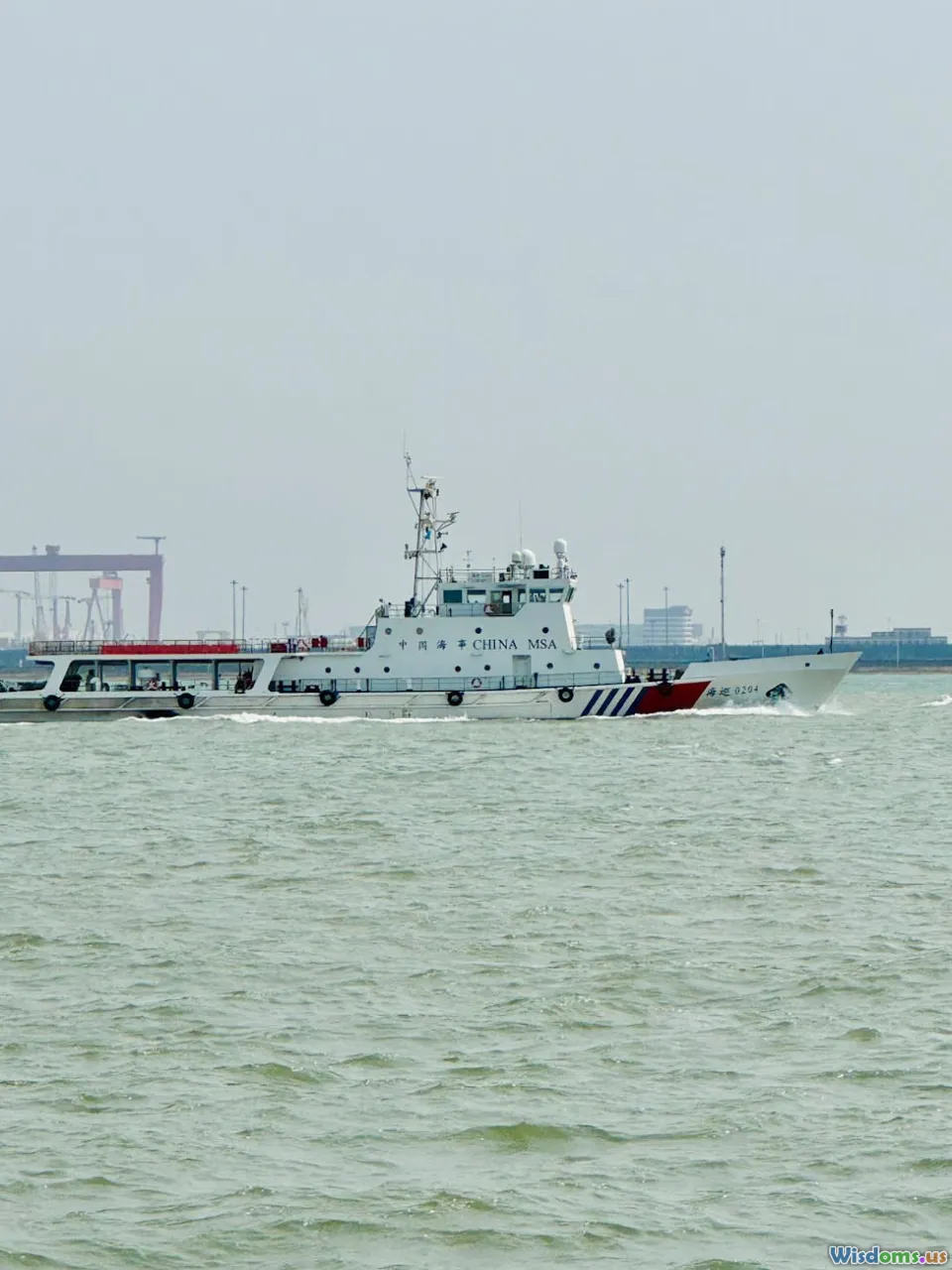
While the world’s major navies invest in deep R&D and deployment, most commercial or non-military ships lack the space, budget, or legal mandate for integrated anti-drone defense. Yet, they are increasingly subject to surveillance or extortion by aerial and surface drones.
Available Solutions for Civilian Operators
- Portable EW Units: Handheld jammers (e.g., DroneDefender, Dedrone) are deployed by security teams on tankers and yachts passing through high-risk waters.
- Physical Barriers: Fine mesh canopies inhibit drone landings or cargo grabs. Some ports have begun net deployments.
Rate the Post
User Reviews
Popular Posts










